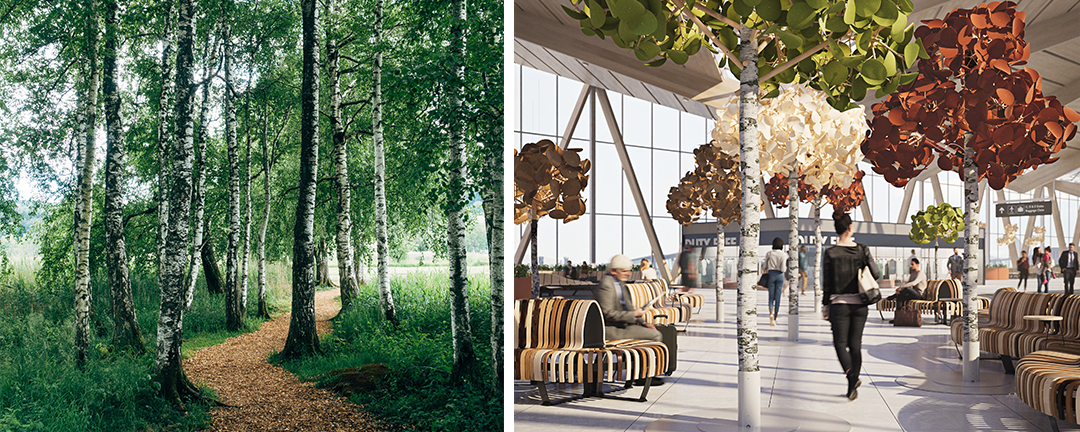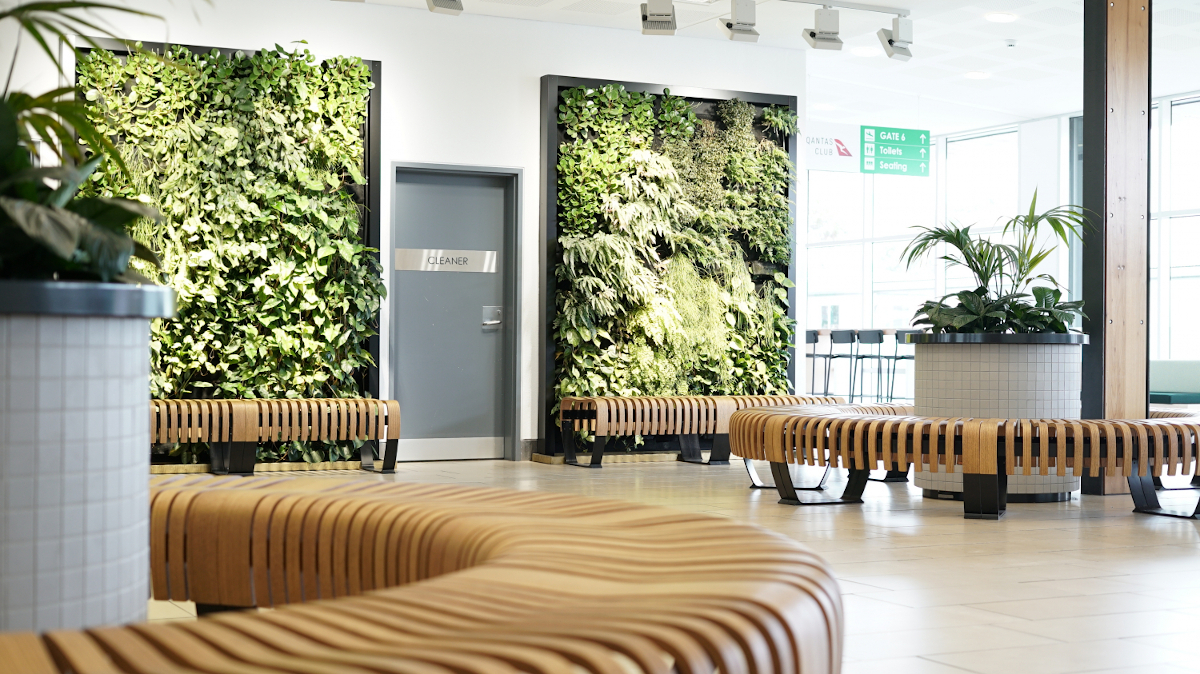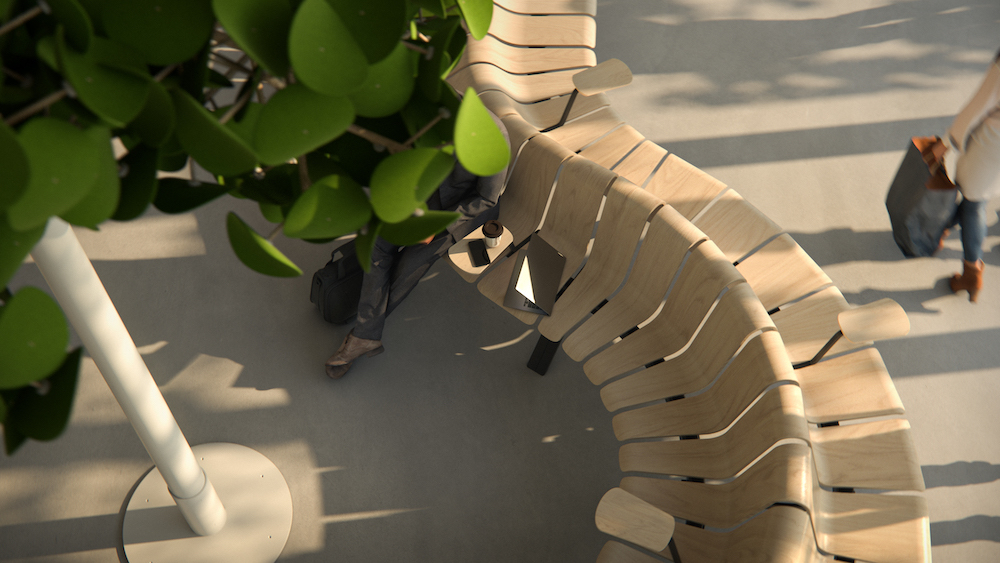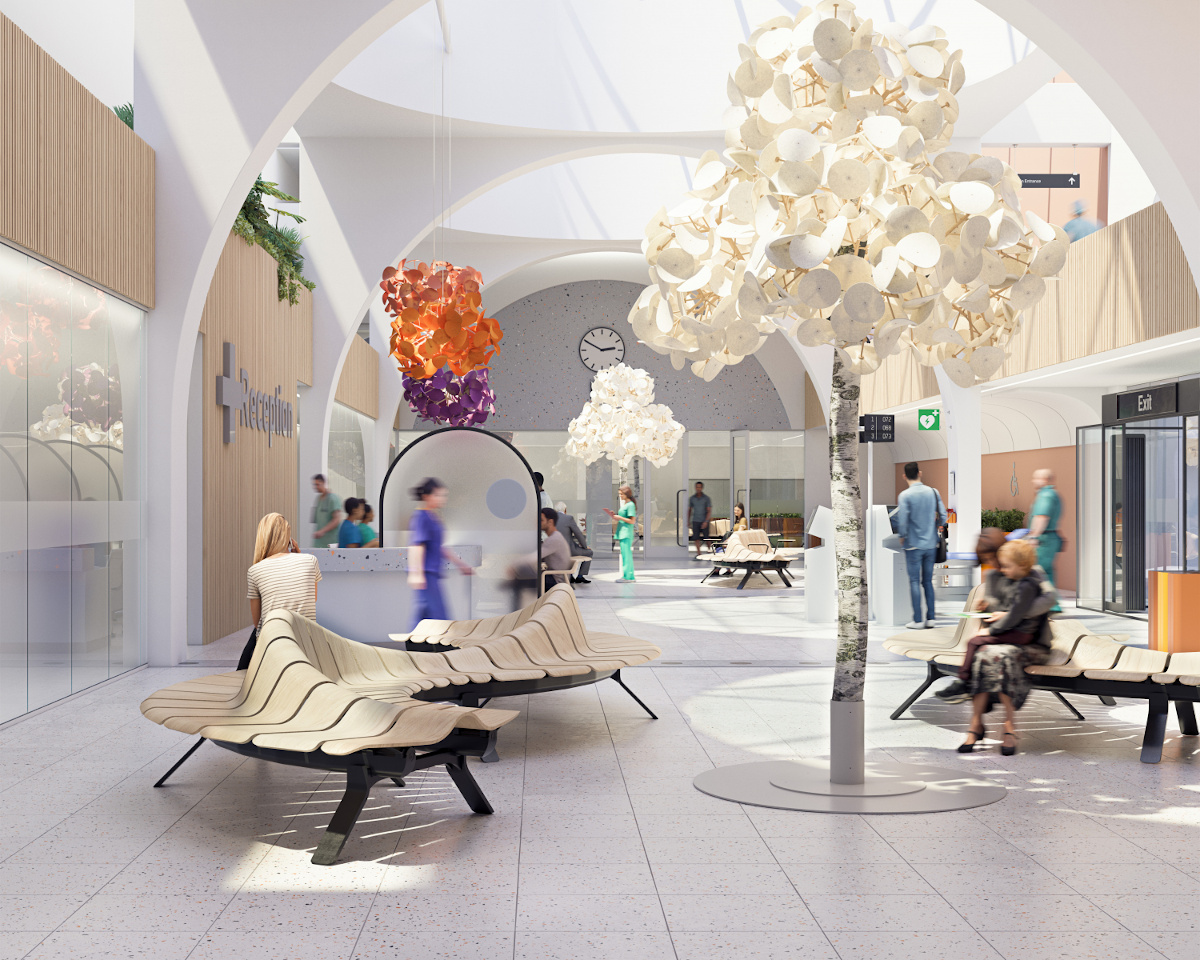Nature as Designer: Biophilic Design in Modern Placemaking
| Company | Green Furniture Concept |
|---|---|
| Date | 24.08.2021 |

Nature as Designer: Biophilic Design in Modern Placemaking
“One of the great challenges of our time is to bring the beneficial experience of nature into the design of contemporary buildings, landscapes, communities, and cities.” – Stephen R. Kellert, Nature by Design: The Practice of Biophilic Design
WHAT IS BIOPHILIA AND BIOPHILIC DESIGN?
The word biophilia means love of natural life (bio: life, philia: love) and relates to the physical, emotional, mental and spiritual connection between human beings and our natural environment. Biophilic design brings that connection into our designed spaces and places, encouraging us to develop with an understanding of the importance of nature for our health and wellbeing. We invite nature to work with us as co-architect.

THE THREE CATEGORIES OF BIOPHILIC DESIGN
NATURE IN THE SPACE
The most direct aspect of biophilic design. This includes bringing in living plants wherever possible, natural light (in rhythm with the human body clock), seasonality, fresh air, water, natural soundscapes and acoustics, scents and flavours. At Green Furniture Concept, we have included room for planters in our furniture.
NATURAL ANALOGUES
This is where we borrow from nature key elements like colours, shapes, lines, patterns and textures. We use a palette of natural materials e.g. wood, stone, clay, shell, natural fibres and textiles. Our designers at Green Furniture Concept inhabit the world of natural analogues in their use of organic shapes, lines and of course wood.

NATURE OF THE SPACE
This means looking to nature for organisation and orientation of spaces. We create zones and transitions, balance open space with hiding places (‘prospect and refuge’), and aim for variety in space and sensory experience. This is another important aspect that we work with at Green in the way we configure our modular designs and help create new spaces.
WHY BIOPHILIC DESIGN MATTERS IN PLACEMAKING
The way visitors engage with public places is shifting and revenue depends on a more holistic definition of dwell-time. Visitor experience is king and along with it a sense of meaning, environmental responsibility, happiness and good health that encourages people to stay longer, stay connected and come back for more.
Public places need to appeal and draw people in, but they also need to be good for us. In short, biophilic design has become a vital aspect of placemaking, place branding and destination marketing.
HEALTH BENEFITS OF BIOPHILIC DESIGN IN PLACEMAKING
Long before Covid and lockdown, placemaking was taking an increasing interest in the incorporation of nature into design. Science offered clear evidence connecting nature with health – both physical and mental. We know that being surrounded by nature boosts immunity (Qing Li 2013), reduces stress (Qing Li 2013), speeds up recovery from illness and surgery (Ulrich 1984), and increases concentration levels (Kaplan 1989).
Time in nature also restores attention after fatigue (Kaplan 1989), meaning biophilic places has the potential to increase visitor dwell-time. And it aids productivity and social connection which are fundamental to building the successful networks and communities that make places matter.
A discovery that started out as the preserve of healthcare centres and hospitals has become mainstream. Biophilia is no longer just a passing trend but a way of being. It’s now incorporated into the design of office buildings, retail developments, community spaces and homes.

BIOPHILIC DESIGN AND RECOVERY AFTER COVID
Lockdown under Covid has moved the conversation about biophilia forward. People are now keener than ever to be connected to green public spaces, particularly those on their doorstep. There’s been a significant rediscovery and valuing of local places, a ‘second home’ attachment to place and community and a sense of belonging, particularly for those who lack access to private gardens. ‘Topophilia’ or love of place, has emerged as the all-important partner of biophilia.
BIOPHILIC DESIGN AND TRAVEL
And it’s not just about local places. As life returns to normal, biophilia will be an important part of travel and the design of bridges, transport hubs, stations and airports. Apart from the need to offset the obvious environmental impact, a wellbeing focus is being driven by consumers seeking ways to minimise the stress of travelling and enjoy all aspects of their journey, not just the final destination.
REGAINING VISITOR CONFIDENCE
Knowing how much our immunity and mental health is boosted by nature has important implications for recovery after a pandemic. Both individually and collectively there’s a sense that spending time in nature can restore us, making us stronger and more resistant to further strains of the virus. Overall, it seems that biophilia is our indispensable resource in regaining visitor confidence.
Find out how Green Furniture Concept is working with the principles of biophilic design in its range of modular furniture to transform public spaces for the better.
Get in touch to find out how you can add biophilic design in your space
Contact
Carlsgatan 3 BV
211 20 Malmö
Sweden
- +46 (0)406 00 93 30

